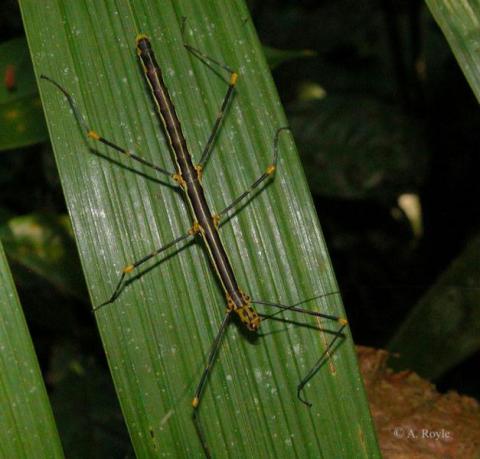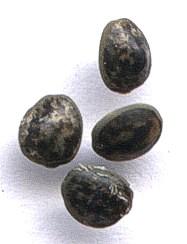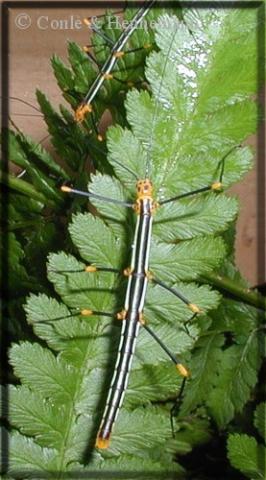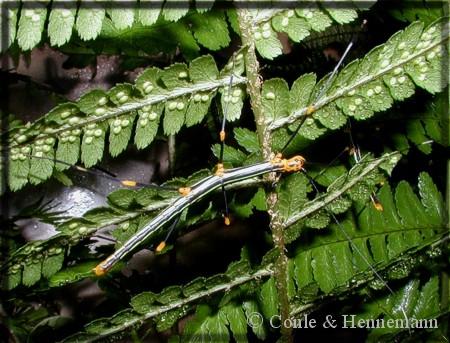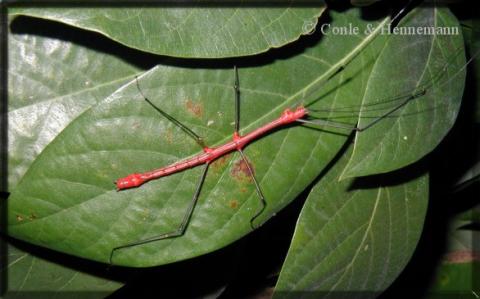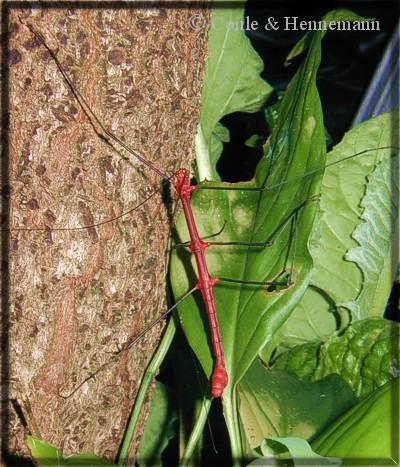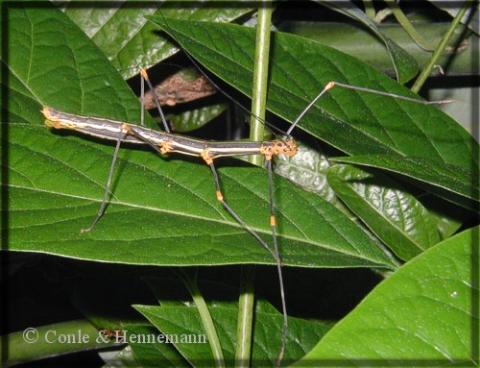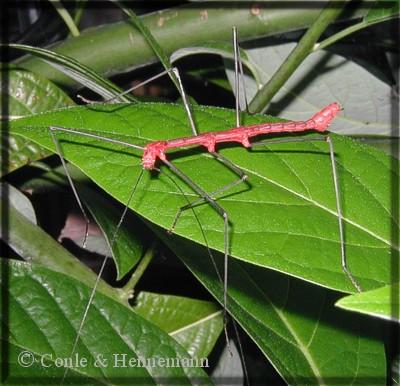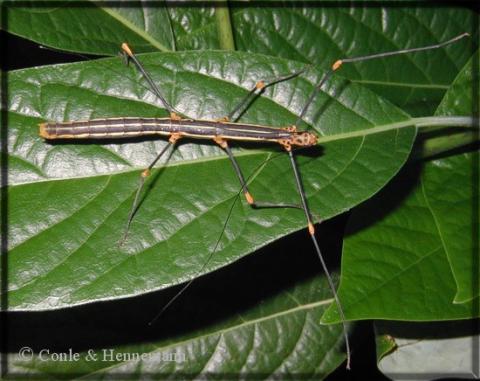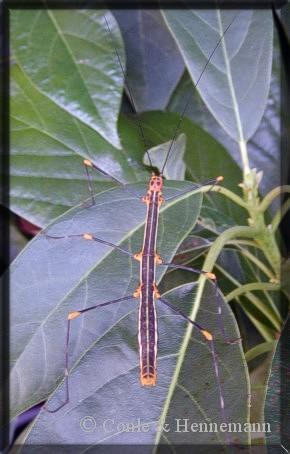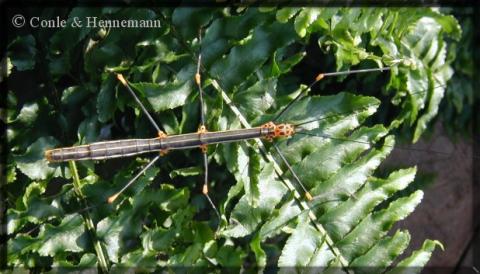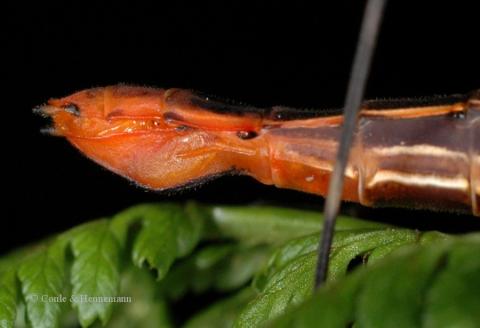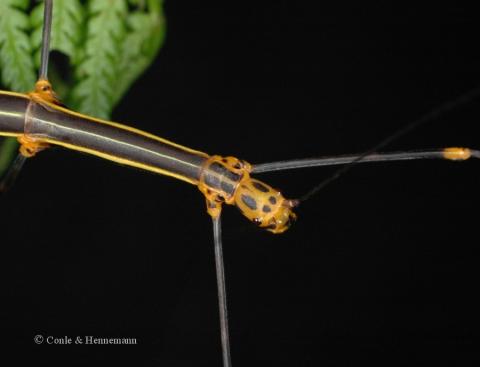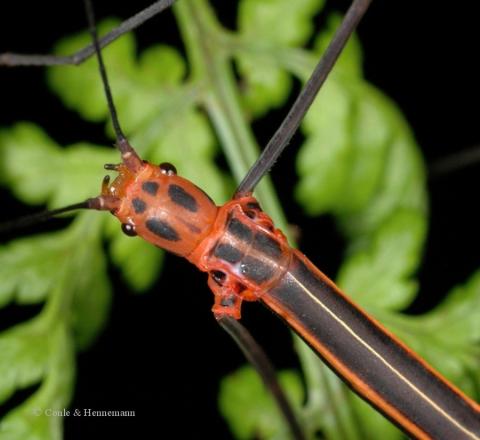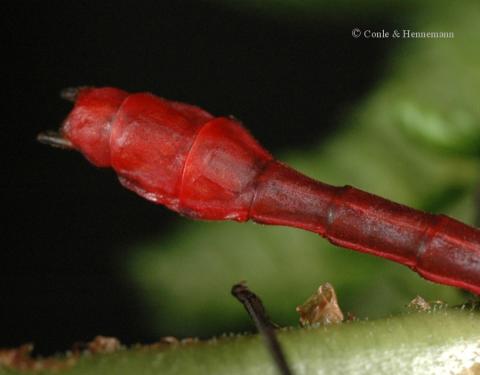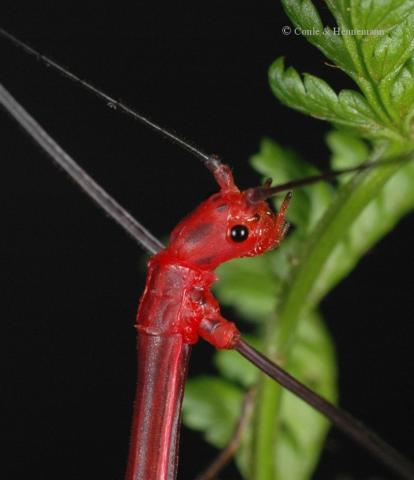
Breeding notes
(by Vítězslav Krejsa)
Origin
Tarapoto, Peru
Females
Body length ≈ 7 cm
Yellow-black colouration
Very long antennae
Black marks on head are clearly visible
White stripes along the entire length of the body
Males
Body length ≈ 6 cm
Red colouration of body
Very long antennae
Long and prominent black legs
Nymphs
Body length ≈ 10 mm
Yellow-black colouration
Appearance of nymphs is similar to adult females
Eggs
≈ 3 x 2 mm
Brown with light spots
They darken as the embryo grows older
Incubation time is about 4 months on a damp substrate (temperature 18 – 22°C)
Foodplants
ferns
are very well accepted by freshly hatched nymphs, older nymphs and adults
Additional notes
It is easy to breed this species in case you have access to ferns for the whole year
They are quite active, also during the day.
1-2 weeks after their final moult, females start laying eggs, about 1-2 a day
Humidity at at least 70% is good for the whole development. Spray once every day
Species is sensitive to high temperatures. Keep them under 25°C
It is good to spray eggs a few weeks before hatching. Nymphs get stuck in eggs if the humidity is not high enough
A cage of at least 25 x 25 x 25 cm should be provided for 2-3 adult pairs
Make sure that nymphs, which are about to undergo their adult moult, do not find places in the cage which would not offer them enough space beneath to moult successfully
I advise to keep different phasmid species separately to have better control over the species you are breeding.
White smelly defensive spray was observed.
